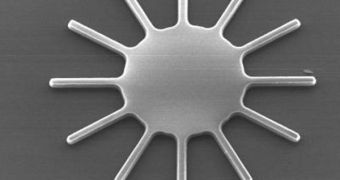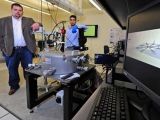Microelectromechanical systems, or MEMS, are tiny devices able to perform highly-complex tasks. Experts at the Purdue University are now planning to use them to create filters for electronic signals, to be used most commonly in mobile phones, but also in other, more exotic applications. The new class of systems currently under development features vibrating, hair-thin structures inside of them, which are able to resonate and vibrate in specific patterns. This ability allows them to let some sounds in, and to stop others from passing through – essentially, a noise filter.
“The potential computer-memory application is the most long term and challenging. We are talking about the possibility of creating complex behaviors out of relatively simple substructures, similar to how in cellular biology you can have a relatively complex behavior by combining hundreds or thousands of simple cells,” explains Jeffrey Rhoads, who is an assistant professor of mechanical engineering at Purdue University. He is the main developer of the new “band-pass” filter.
In addition to their perspective applications in mobile phone technology, the new filters could also be employed in state-of-the-art biosensors, as well as in tasks related to homeland security and terrorist protection. Because of the peculiar shapes that Rhoads created his MEMS structures in (a non-traditional coupling arrangement), their properties far exceed those of existing devices similar in class. It would also appear that the new design is far more efficient than the previous one in terms of performance, and that the non-linear structure is even more stable and reliable than the linear one.
At this time, the expert says, the devices are being made at the Purdue Discovery Park's Birck Nanotechnology Center. Involved in the work is also PU assistant professor of electrical and computer engineering Dimitrios Peroulis, and mechanical engineering graduate student Venkata Bharadwaj Chivukula. Their achievements will be presented on September 2, during a meeting of the American Society of Mechanical Engineers' Third International Conference on Micro and Nano Systems.

 14 DAY TRIAL //
14 DAY TRIAL // 
